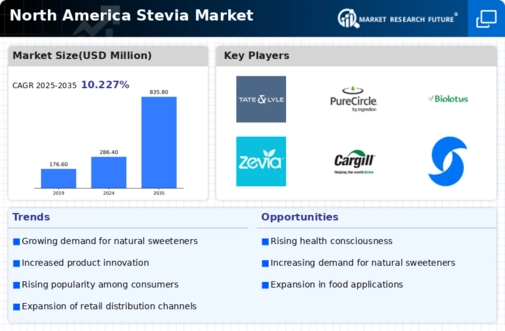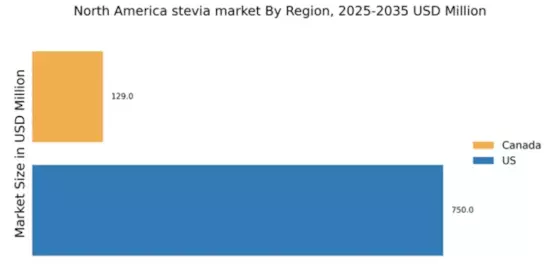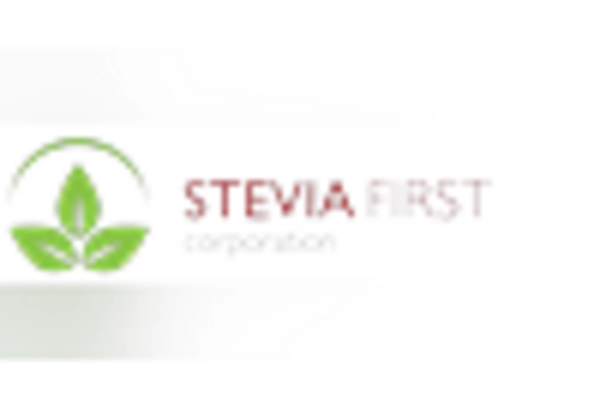Health Consciousness Among Consumers
The increasing awareness of health issues related to sugar consumption is driving the stevia market in North America. Consumers are becoming more health-conscious, seeking alternatives to traditional sweeteners that contribute to obesity and diabetes. This shift in consumer behavior is reflected in market data, indicating that the demand for low-calorie and natural sweeteners, such as stevia, has surged. In 2025, the market for stevia is projected to grow by approximately 15%, as more individuals opt for products that align with their health goals. The stevia market is thus benefiting from this trend, as manufacturers are responding by incorporating stevia into a variety of food and beverage products, catering to the growing segment of health-oriented consumers.
Expansion of the Food and Beverage Sector
The ongoing expansion of the food and beverage sector in North America is a key driver for the stevia market. As the industry evolves, there is a growing demand for innovative products that cater to diverse consumer preferences. The incorporation of stevia into various applications, from soft drinks to baked goods, is becoming increasingly common. Market analysis suggests that the food and beverage sector is projected to grow by 10% annually, creating ample opportunities for stevia-based products. The stevia market is likely to benefit from this growth, as manufacturers seek to meet consumer demand for healthier, lower-calorie options.
Rising Popularity of Clean Label Products
The clean label movement is gaining traction in North America, influencing the stevia market significantly. Consumers are increasingly scrutinizing ingredient lists, preferring products that are free from artificial additives and preservatives. This trend is evident in the food and beverage sector, where brands are reformulating their products to include natural sweeteners like stevia. According to recent data, the clean label market is expected to reach $180 billion by 2026, with stevia playing a crucial role in this transformation. The stevia market is thus positioned to thrive as companies prioritize transparency and natural ingredients, appealing to a demographic that values authenticity and health.
Increased Investment in Research and Development
Investment in research and development (R&D) within the stevia market is fostering innovation and product enhancement. Companies are focusing on improving the extraction processes and enhancing the taste profiles of stevia to make it more appealing to consumers. This commitment to R&D is crucial, as it allows for the development of new formulations that can compete with traditional sweeteners. Recent reports indicate that R&D spending in the natural sweetener sector is expected to increase by 20% over the next five years. This investment is likely to yield new products that will further drive the growth of the stevia market in North America.
Growing Demand for Sugar Alternatives in Health Foods
The rising demand for sugar alternatives in health foods is a significant driver for the stevia market in North America. As consumers become more aware of the health risks associated with excessive sugar intake, they are actively seeking healthier options. The health food sector is experiencing a notable shift, with a projected growth rate of 12% annually. This trend is encouraging manufacturers to incorporate stevia into their products, ranging from protein bars to smoothies. The stevia market is thus poised to capitalize on this demand, as health-conscious consumers increasingly favor products that utilize natural sweeteners.


















Leave a Comment